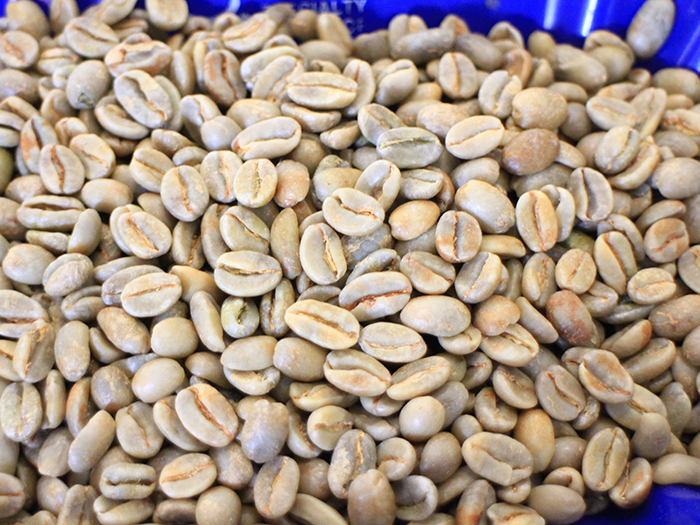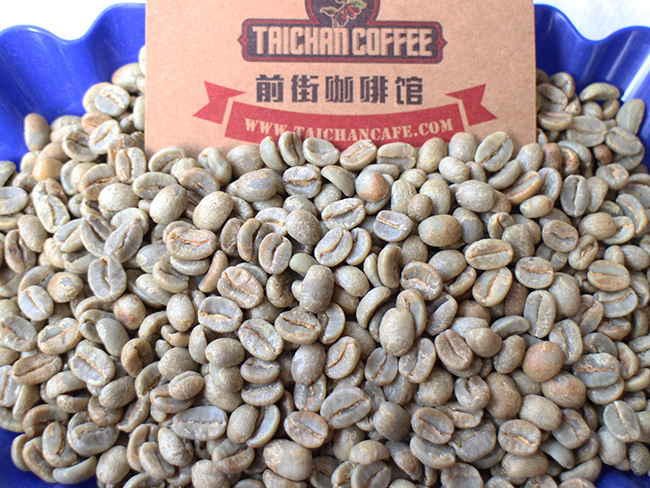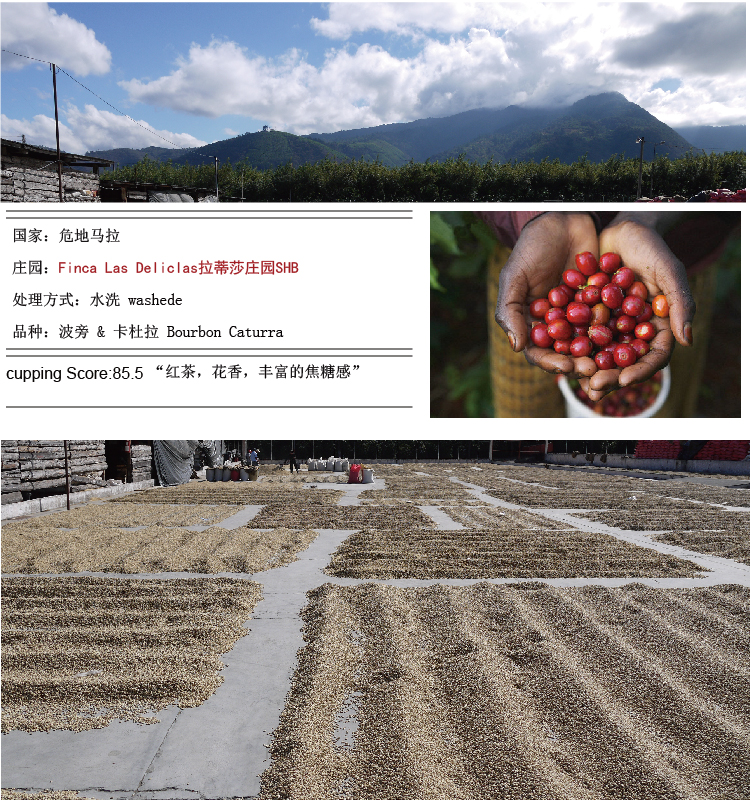How to choose coffee and raw beans by hand? Choose the right raw coffee beans? Theodore No.1 in San Juan, Honduras
What kind of raw beans are high-quality raw beans? First look at the surface of the beans, fresh high-quality raw beans, shiny surface, in addition, processed good raw beans, uniform color, uneven surface color can not be called good beans, must choose uniform color when purchasing. Secondly, the particle size is consistent, which is also evidence of good quality management. Make sure the particle size is consistent when purchasing. Uniform and neat coffee beans can achieve consistent roasting effect; otherwise, some are too deep and bitter, and some are too shallow and sour, which will affect the overall taste of roasted coffee beans. Green beans are divided into several grades according to quality standards, which vary from place to place and are basically determined according to size and shape. The higher the grade, the better the quality. At present, because the domestic coffee green bean market has just started, the coffee green beans sold are mainly low-grade futures beans. The green beans we get usually have many flaws. Defective coffee beans are quite harmful, including variants that are not flat beans or round beans, and because of developmental abnormalities, the center of the green beans is broken during shelling. The beans tend to be uneven when baked. Fermented beans/black beans are fermented internally during processing or washing. Fermented sour. Green beans/white dead beans Coffee cherries are harvested before they are fully ripe. The beans are ivory in color and green in taste when baked. Mildew beans processing, transportation process damp, rain, mold breeding. As long as there is a bean mold, it will soon spread to others, be sure to pay attention. Worm-eaten beans are eaten by a pest called coffee beetles, which have wormholes in the beans and give coffee a bad smell.
Country: Honduras
Origin: San Juan Cido
Altitude: 1450-1550 m
Treatment method: washing
Breed: Bourbon
Processor: COMISAJUL Cooperative
Flavor: Clean, toasted nuts, milk chocolate
San Juan Cido is a small village in central Honduras, 40 km northeast of Tegucigalpa, Honduras. The town is under the jurisdiction of Francisco Morazán, which also includes Nuevo Rosario,Guacamaya and PlanGrande, with a total population of approximately 1400.
Although San Juan Cido was historically known for its mineral deposits, its importance today is highlighted by its location within the buffer zone of La Tigra National Park, a rainforest ecosystem and Honduras 'first national park. The park acts as a huge reservoir of water, providing water for the capital's half a million inhabitants.
Because Honduras is located in the tropics, San Juan likes to have less temperature variation throughout the year. Therefore, the so-called winter is actually the rainy season, and the so-called summer is actually the dry season. In the tropics, altitude has a greater effect on temperature than the length of precipitation in the year. San Juan Cito's geographical location is above 1239 meters above sea level, making the temperature slightly cooler throughout the year. In summer (March-June), the highest temperatures tend to be 26 ° C. C, and the lowest temperature averages about 18? C。The average temperature in winter is 20. C, the lowest is about 14. C.
San Juan Cito's modern economy is largely dependent on agriculture, much of it small-scale coffee production, and its climate and altitude are very conducive to producing high-quality coffee beans. COMISAJUL, a cooperative of hundreds of small coffee farmers in central Honduras, is located in San Juan Cito. COMISAJUL is a cooperative of hundreds of coffee farmers in San Juan Cido, where coffee is grown at an altitude of 1450-1550 meters and shaded by banana, avocado, papaya and other fruit trees. Coffee farmers hand-pick ripe fruit during harvest season, wash it and then dry it in the sun. The fermented water produced by washing with coffee peel pulp is collected and used as fertilizer for coffee trees. This batch of coffee tastes very clean, sweet, very mild acidity, with milk chocolate flavor.

Important Notice :
前街咖啡 FrontStreet Coffee has moved to new addredd:
FrontStreet Coffee Address: 315,Donghua East Road,GuangZhou
Tel:020 38364473
- Prev

How to choose coffee and raw beans by hand? Choose the right raw coffee beans? 90 + sun-dried raw beans imported from Sidamo
What kind of raw beans are high-quality raw beans? First look at the surface of beans, fresh and high-quality raw beans, the surface is shiny, in addition, the processing of good raw beans, uniform color, the surface of uneven color can not be called good beans, must choose uniform color. Secondly, the particle size is the same, which is also evidence of good quality management. Make sure that the particle size is the same when you buy it.
- Next

How to choose coffee and raw beans by hand? Choose the right raw coffee beans? Raw beans from Guardia La Tisa Manor
What kind of raw beans are high-quality raw beans? First look at the surface of beans, fresh and high-quality raw beans, the surface is shiny, in addition, the processing of good raw beans, uniform color, the surface of uneven color can not be called good beans, must choose uniform color. Secondly, the particle size is the same, which is also evidence of good quality management. Make sure that the particle size is the same when you buy it.
Related
- Detailed explanation of Jadeite planting Land in Panamanian Jadeite Manor introduction to the grading system of Jadeite competitive bidding, Red bid, Green bid and Rose Summer
- Story of Coffee planting in Brenka region of Costa Rica Stonehenge Manor anaerobic heavy honey treatment of flavor mouth
- What's on the barrel of Blue Mountain Coffee beans?
- Can American coffee also pull flowers? How to use hot American style to pull out a good-looking pattern?
- Can you make a cold extract with coffee beans? What is the right proportion for cold-extracted coffee formula?
- Indonesian PWN Gold Mandrine Coffee Origin Features Flavor How to Chong? Mandolin coffee is American.
- A brief introduction to the flavor characteristics of Brazilian yellow bourbon coffee beans
- What is the effect of different water quality on the flavor of cold-extracted coffee? What kind of water is best for brewing coffee?
- Why do you think of Rose Summer whenever you mention Panamanian coffee?
- Introduction to the characteristics of authentic blue mountain coffee bean producing areas? What is the CIB Coffee Authority in Jamaica?

